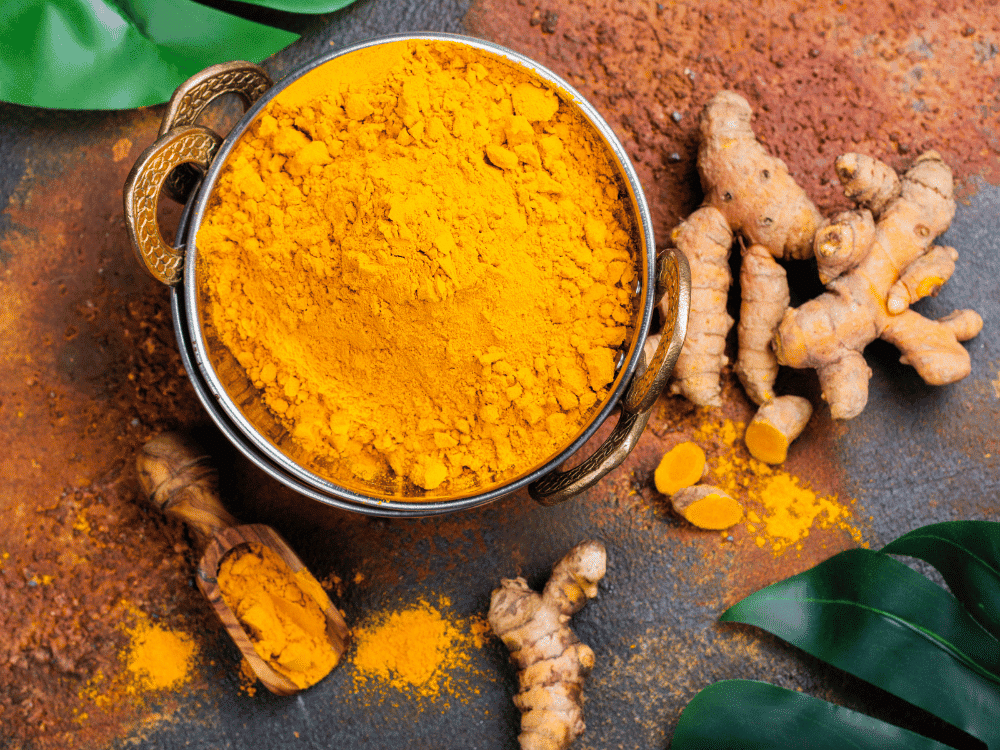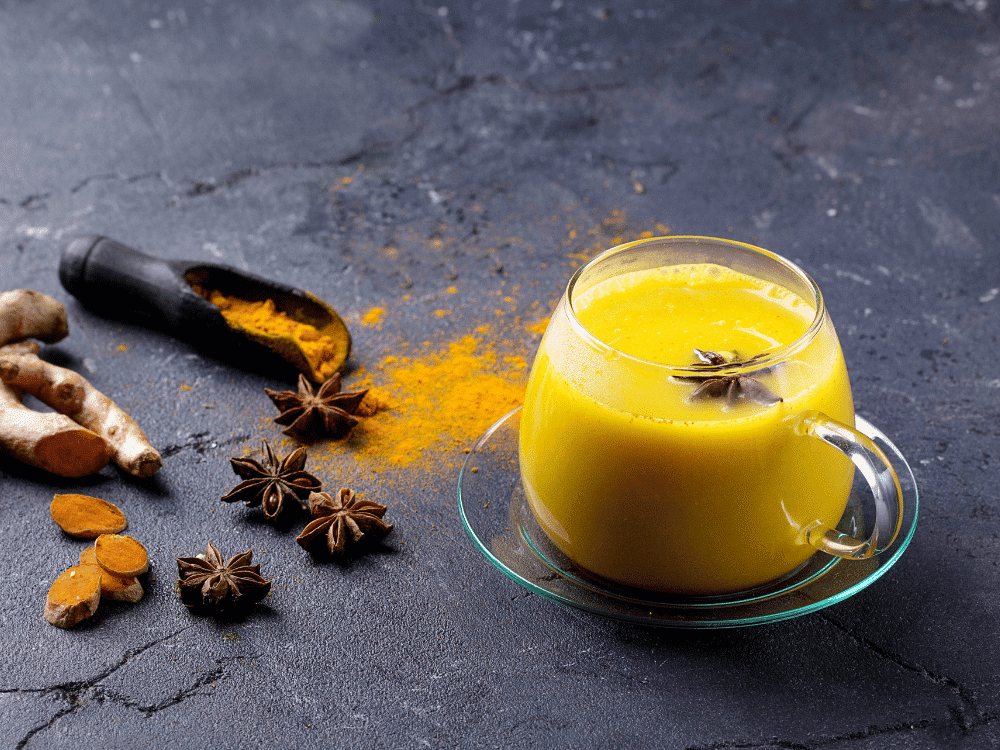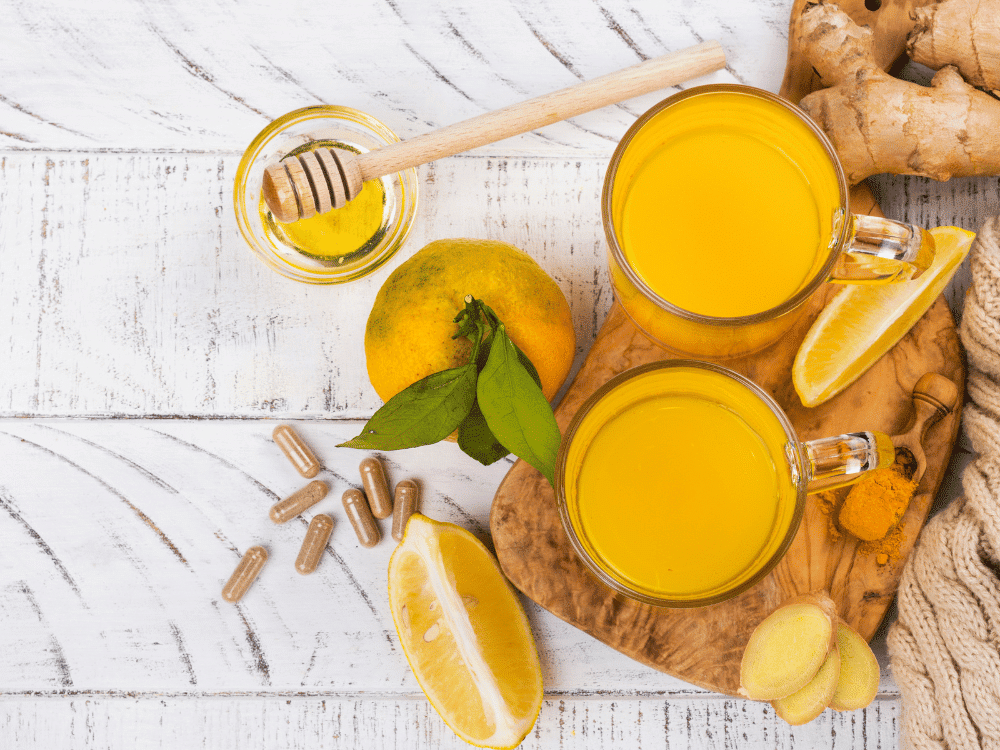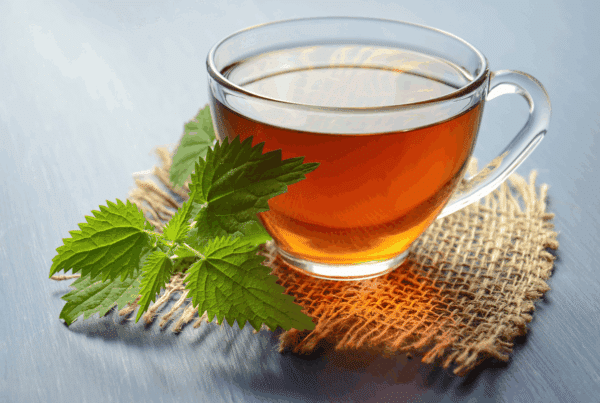Turmeric Through the Ages: The History and Tradition of Turmeric Use
Turmeric, also known as the "Queen of Spices," has a rich history and deep-rooted tradition in cooking and medicine around the world. This precious spice is obtained from the root of the Curcuma Longa plant and is characterized by its characteristic bright orange color.
Its benefits are numerous and include a wide range of health benefits. Turmeric is regularly used in food and beverages, and many cultures believe that it has anti-inflammatory properties, a positive effect on joint health, and can be used as a remedy for various health conditions such as prostatitis, high blood pressure, and even in the fight against cancer and depression. In addition, turmeric has a positive effect on strengthening immunity, preserving skin health and facilitating the process of losing weight.
In order to provide you with a detailed insight into this precious plant, we will explore all its characteristics and benefits, but also consider the existing contraindications and limitations in its use.
What is turmeric and why is it worth paying attention to?
Turmeric is the dried and ground root of the plant Curcuma Longa. This Indian spice is characterized by its bright orange color and is often called Indian saffron. The taste of turmeric is specific, combining mild spiciness, bitterness, pungency, and gentle notes of ginger. When used in dishes, especially in combination with rice, it gives the meal a unique aroma and taste.
There are two dominant varieties of turmeric, Madras and Alleppey. The Alleppey variety stands out for its high content of curcumin and essential oils, which are key to its positive impact on health. In addition, the Alleppey variety is characterized by a beautiful bright orange color, more intense taste and aroma compared to the average organic turmeric. Its aroma is reminiscent of fresh turmeric, has an earthy note and mild bitter tones of lemon and mint. The texture is also "richer" due to the higher content of curcumin, the key ingredient that gives it its name, as well as essential oils.

The use of turmeric from ancient times to the present day
The tradition of using turmeric throughout the centuries has a long and rich past that goes deep into the history of different cultures around the world. This spice, whose root is obtained from the Curcuma Longa plant, was first used in Indian Ayurvedic medicine more than 4,000 years ago. Even then, its medicinal and culinary values were recognized.
In India, turmeric is used not only as a spice, but also as a symbol of spiritual and religious importance. In Hinduism, turmeric is often used for ritual consecration and to mark special events, including weddings and religious ceremonies. It is also used as a natural dye for fabrics and foods, giving them a characteristic orange-yellow hue.
Over the centuries, turmeric was transported by caravans and trade to other parts of Asia, and then to Europe, where it became a valued spice and medicine. During the Middle Ages, turmeric was a luxury item and a status symbol, and through the 16th and 17th centuries it became popular in cooking.
In modern times, turmeric has become a globally recognized spice and medicinal plant. Its health benefits have been extensively studied and proven, leading to its widespread use in alternative medicine and nutritional supplements. It has also become a favorite ingredient in cooking around the world, with popular dishes such as curry, golden milk and a variety of drinks.
The tradition of using turmeric throughout the centuries testifies to its universal appeal and value. Today, turmeric remains an indispensable component of many cultures and continuously inspires new uses in modern society.
Turmeric for heart health: Natural protection
Turmeric is increasingly recognized as a natural protector for heart health, and scientific research has highlighted the many benefits that curcumin, the main active ingredient in turmeric, can provide for the cardiovascular system.
First, turmeric has the ability to reduce levels of bad cholesterol (LDL) and triglycerides, which are risk factors for heart disease. In addition, curcumin helps maintain healthy blood vessel function, which contributes to normal blood pressure. This is crucial for the prevention of hypertension and atherosclerosis.
Another important role of turmeric in heart health is its anti-inflammatory properties. Chronic inflammation plays a key role in the development of heart disease, and curcumin helps reduce inflammation in the body. In addition, turmeric has antioxidant effects, which means it can protect the heart from oxidative stress and free radical damage.
One of the most important aspects of heart health is preventing the formation of blood clots, which can lead to a heart attack or stroke. Curcumin has properties that can prevent blood clotting and maintain normal blood flow through the arteries.
To take advantage of turmeric's heart-healthy benefits, regular consumption of this spice or taking curcumin supplements under the supervision of a nutrition and health professional is recommended. This natural protection for the heart can be a valuable component of your cardiovascular health strategy.
Turmeric and inflammation: Nature's anti-inflammatory wizard
Inflammation is the body's natural response to injury and infection, but chronic inflammation can be harmful and is associated with many chronic diseases. In the fight against inflammation, turmeric stands out as a natural anti-inflammatory wizard, thanks to curcumin.
Curcumin has the ability to inhibit multiple inflammatory molecules in the body, including factors that play a key role in inflammation processes. This can help reduce the symptoms of inflammatory conditions like arthritis, and also reduce the risk of developing chronic diseases related to inflammation, such as heart disease, diabetes and Alzheimer's disease.
In addition, curcumin also acts as an antioxidant, meaning it protects the body from oxidative stress and free radical damage. This is especially important because oxidative stress can contribute to inflammation and the development of chronic diseases.
To take advantage of the anti-inflammatory benefits of turmeric, you can add it to your diet or use curcumin supplements.

Turmeric for healthy skin: Radiant beauty inside and out
Turmeric is not only beneficial for internal health, but can also have a significant effect on the beauty and health of the skin. Its benefits are numerous and can contribute to the great appearance of the skin both inside and outside.
Turmeric is known for its antibacterial and antiseptic properties, which makes it useful for treating various skin problems such as acne, scars and wounds. It can be used as an ingredient in face masks or as a topical application to improve skin tone and texture.
In addition, curcumin, the main component of turmeric, has an antioxidant effect that helps protect the skin from damage caused by free radicals and aging. It can help reduce wrinkles and preserve a youthful appearance.
Turmeric can also be consumed as a dietary supplement to achieve a healthy and glowing complexion from within. Its anti-inflammatory properties can reduce redness and irritation of the skin, leaving it glowing and balanced.
To reap the benefits of turmeric for healthy skin, you can include it in your diet, apply it to your skin as part of a beauty treatment, or use skin care products that contain turmeric extract. Either way, turmeric may be the key to achieving glowing and healthy skin.
Turmeric for detoxification: Cleansing the body of toxins
Turmeric is often used as a natural tool for detoxifying the body, helping the body to rid itself of toxins and cleanse the internal systems. This ancient herb, known for its anti-inflammatory and antioxidant properties, plays a key role in supporting detoxification processes.
First, turmeric improves the work of the liver, which is crucial in the process of eliminating toxins from the body. The liver uses various enzymes to metabolize and break down toxic substances. Curcumin, the main active component of turmeric, stimulates the production of these enzymes, thus improving the liver's ability to effectively neutralize toxins.
Turmeric also has diuretic properties, encouraging the urinary system to effectively eliminate waste from the body. Increased urination helps to excrete excess salt and other harmful chemicals.
Turmeric also acts as an antioxidant, fighting free radicals and cell damage. This process is crucial for protecting organs and systems from the harmful effects of toxins.
Additionally, turmeric is useful for cleansing the digestive system. It improves bowel function and supports a healthy balance of intestinal flora. This helps in better absorption of nutrients and elimination of waste materials from the body.
Turmeric detoxification can be done in a variety of ways. One of the popular methods is to prepare "golden milk", a drink that combines turmeric with vegetable milk, black pepper and honey. This drink is often consumed as part of detoxification programs.
Turmeric can be a great natural addition to your detoxification strategy, but it should be used carefully and with a holistic approach to overall health.
Why is it better to consume turmeric powder?
Turmeric, with its key ingredient curcumin, has a truly impressive array of potential health benefits. However, the question arises: why is it often better to consume turmeric powder than to take curcumin supplements?
The first key difference is integrity. Turmeric powder is the whole plant, while curcumin supplements are usually isolated curcumin in high concentrations. Herein lies one of the main advantages of the natural approach – whole turmeric contains a number of other biologically active components that contribute to its health benefits. These include minerals, vitamins, fiber and various phytonutrients. This mixture of components work together in a synergistic way, which can enhance and extend the health benefits of turmeric.
Another important thing is the nutritional context. Traditionally, turmeric is used as a spice in many Indian dishes, often in combination with black pepper and fats. Black pepper contains piperine, a substance that aids the absorption of curcumin in the body, while fats can also improve the bioavailability of curcumin. Therefore, when turmeric is used as a spice in its whole form, we can better utilize its potential.
The third important point is the dose. Although curcumin in isolated form can have a powerful effect at the molecular level, it also means that we need to consume larger amounts of the supplement to achieve the same effects. This can lead to high doses of curcumin, which is not always safe or effective.
Of course, there is a place for curcumin supplements, especially in cases where a high concentration of curcumin is needed for specific therapeutic purposes. However, a natural approach, where turmeric powder is used as part of a varied diet, can provide numerous health benefits with less risk of side effects.
Turmeric is a precious gift of nature that has been used for thousands of years. Perhaps the best way to use it for our health is to include it in our daily diet, preferably in combination with other natural ingredients that contribute to its benefits.
Turmeric for Emotional Health: Natural Support for Anxiety and Mood
Turmeric has become a subject of interest in the context of anxiety and depression, and there are many studies investigating its potential in this context.
Anxiety is a serious mental health problem that affects millions of people around the world. Evidence suggests that turmeric, specifically its key ingredient curcumin, may provide relief from anxiety symptoms. Many individuals report that curcumin helps them feel calmer and less tense.
The combination of turmeric with black pepper, coconut oil or butter can enhance its benefits, because black pepper helps the absorption of curcumin, and fats make it available to the body.
Studies have also explored the connection between inflammation in the body and depression.
Chronic inflammation can have a negative impact on mental health, and curcumin as a powerful anti-inflammatory agent can help reduce this risk. Also, curcumin is associated with the stimulation of neurogenesis, the process of creating new neurons, especially in the parts of the brain responsible for emotional regulation.
Although there are promising results in support of using turmeric to reduce symptoms of anxiety and depression, it is important to note that further research is needed. Longer studies with larger samples and more rigorous designs are necessary to better understand the effectiveness of turmeric in this context.
Creative Uses of Turmeric: Drinks and Treats
Turmeric is a spice that is traditionally used in many dishes, but more and more people are recognizing its health benefits and are starting to use it in drinks and desserts as well. This creative use of turmeric brings not only a delicious taste but also additional health benefits.
One of the popular drinks is "golden milk" or "turmeric latte". This drink is made by mixing turmeric with vegetable milk, adding a little honey and black pepper. The result is a soothing and anti-inflammatory drink that is often used as a natural remedy for colds and inflammation.
Turmeric is also often added to smoothies to boost its nutritional value. You can combine it with fruits, green vegetables and other superfoods for delicious and healthy drinks.
When it comes to desserts, turmeric is often used to make cookies, cakes and even ice cream. Its bright orange color gives an attractive appearance to these treats, and its antioxidant effects add health value.
Another interesting way to use turmeric is to add it to pancake mixes or omelets. In addition to adding color and flavor, turmeric can improve digestion and provide anti-inflammatory benefits.
The creative use of turmeric in drinks and treats opens the door to enjoying its health benefits in a variety of ways. In addition to being delicious, turmeric can contribute to your overall well-being and add a touch of the exotic to your daily diet.
Superior Organic Turmeric: Your Safe and Effective Option
As you already learned from the previous part of the text, turmeric, also known as "turmeric," is an ancient Ayurvedic spice with exceptional anti-inflammatory and antioxidant properties. It can be your best natural ally in strengthening the immune system, detoxifying the body and reducing inflammatory processes.
However, as with most superfoods, nutrient concentration often goes hand in hand with pesticide risk. Conventionally grown food can contain high levels of these harmful chemicals, which are well known for their toxicity to human health.
When talking about turmeric, we should also consider contamination with microbial organisms and aflatoxins, which are potentially carcinogenic.
Market analyzes have shown that non-organic turmeric often contains dangerously high levels of these toxins. Even organic powdered superfoods, especially those from countries like India and South America, can be contaminated.
That is why it is essential to choose turmeric that has undergone strict controls during production. Superior Organic Turmeric carries certificates from Serbian, Indian and European certification authorities, which guarantees its quality and safety. Our product is carefully manufactured, hermetically sealed to preserve freshness, and lab tested to ensure you are getting the best that turmeric has to offer.
Superior turmeric comes from the Alleppey variety, which stands out for its extremely high level of curcumin, from 5-6%. This is a significant difference compared to the common Madras variety, which typically contains between 1-3% of curcumin. This high content of curcumin makes a huge difference in its effectiveness and benefits for your body.
What makes Superior Turmeric special is the confirmed curcumin content through laboratory analysis. This means that you can be completely sure of the quality and purity of our product. When you consume Superior Turmeric, you get a high content of this key component that is responsible for many of turmeric's health benefits.
This turmeric is also characterized by its freshness and authentic aroma, almost identical to the fresh root of this plant. This is possible thanks to the rapid process of turning the roots into powder just a few days after being pulled from the ground.
Keeping it fresh ensures that you get the best of turmeric, with all its natural benefits intact.
When you choose Superior Organic Turmeric, you are choosing a product that is not only of high quality, but also of proven efficacy. Your health deserves only the best, and we're here to provide it.
Choose Superior Organic Turmeric to enjoy its many health benefits, knowing you are choosing the safest and most effective option for your body and health.
BONUS – Useful recipes with turmeric
Here are some recipes that include turmeric and will allow you to easily include it in your daily diet:

Golden milk recipe
Ingredients:
- 1 teaspoon of turmeric powder
- 1 teaspoon of honey
- 1 cup plant-based milk (such as almond or coconut milk)
- a pinch of black pepper
Instructions:
Heat the milk, add turmeric, honey and black pepper. Mix until well combined. Serve warm as a soothing drink.

Chicken curry recipe
Ingredients:
- 500g chicken meat
- 1 tablespoon turmeric powder
- 1 tablespoon curry powder
- 1 onion
- 2 cloves of garlic
- 1 tomato
- salt and pepper to taste
Instructions:
Fry chopped onion and garlic in a pan, add chicken cubes and cook until they turn white. Add the turmeric and curry, then the chopped tomatoes. Cook until the meat is cooked. Serve with rice.
Turmeric smoothie recipe
Ingredients:
- 1 banana
- 1 cup almond milk
- 1/2 teaspoon of turmeric powder
- 1 teaspoon of honey
- pinch of cinnamon
Instructions:
Place all ingredients in a blender and blend until smooth. Serve cold.
Recipe for Roasted Turmeric Cauliflower
Ingredients:
- 1 head of cauliflower
- 2 teaspoons turmeric powder
- olive oil
- salt and pepper to taste
Instructions:
Chop the cauliflower into florets, coat with olive oil and sprinkle with turmeric, salt and pepper. Bake in the oven at 200°C for about 20-25 minutes or until golden brown.

Turmeric tea recipe
Ingredients:
- 1 teaspoon of turmeric powder
- 1 cup of warm water
- honey to taste
Instructions:
Dissolve turmeric in that water, add honey and mix well. This tea is great for detoxification and relaxation.
These recipes are just the beginning – you can add turmeric to many dishes and drinks to enjoy its health benefits and delicious taste.










